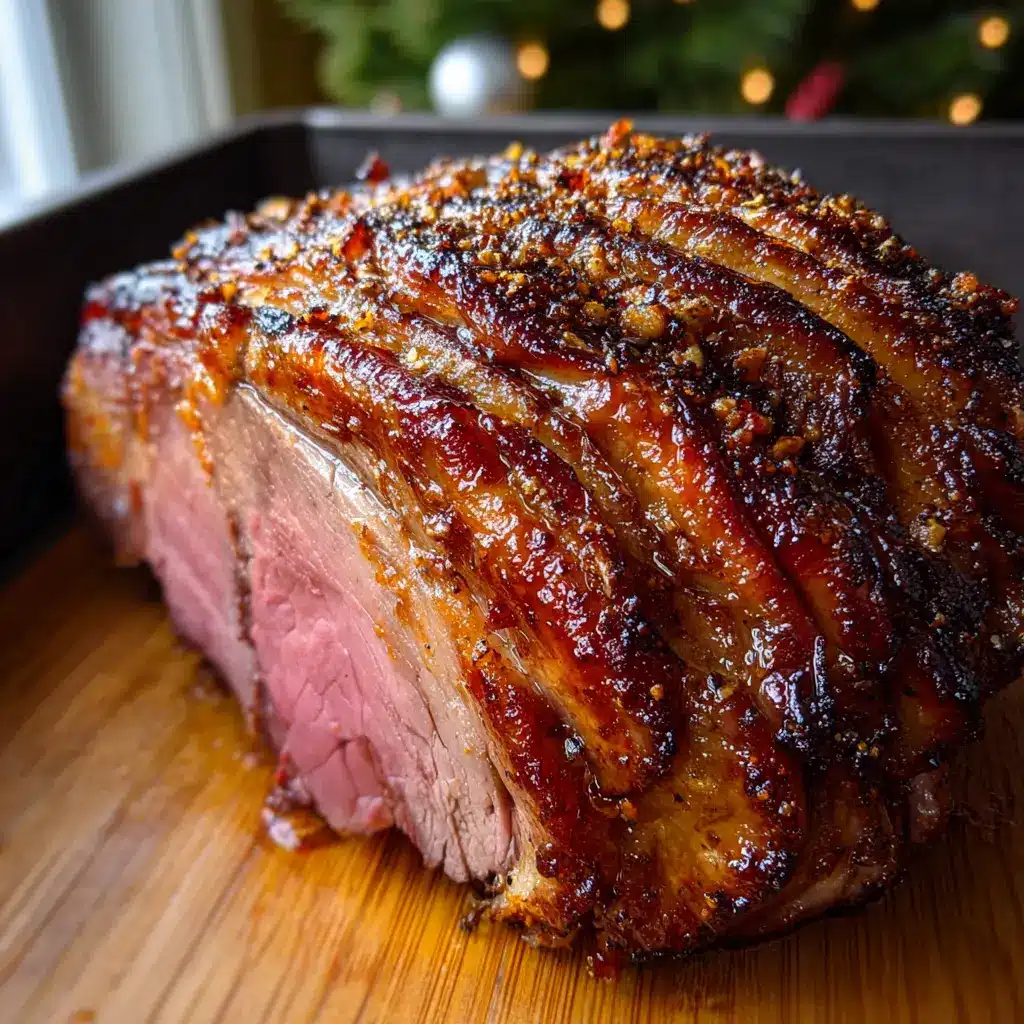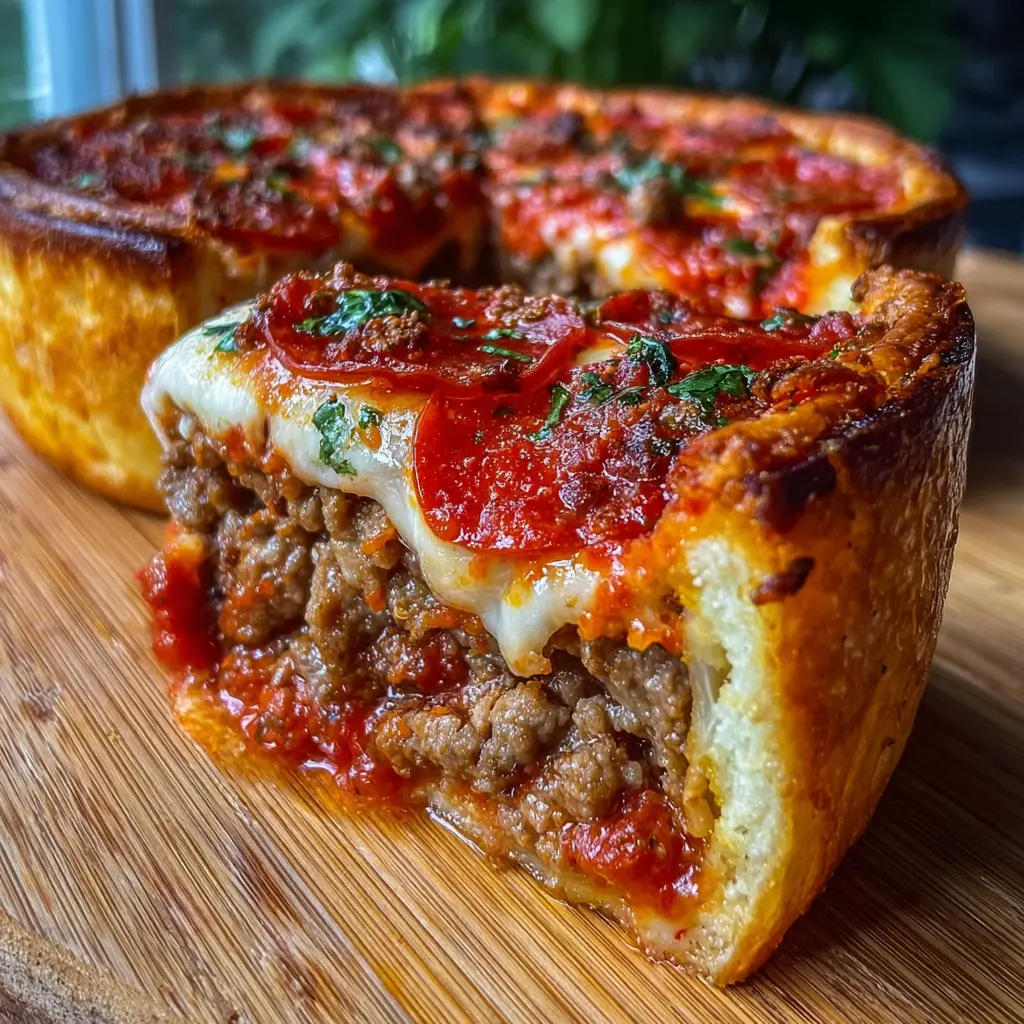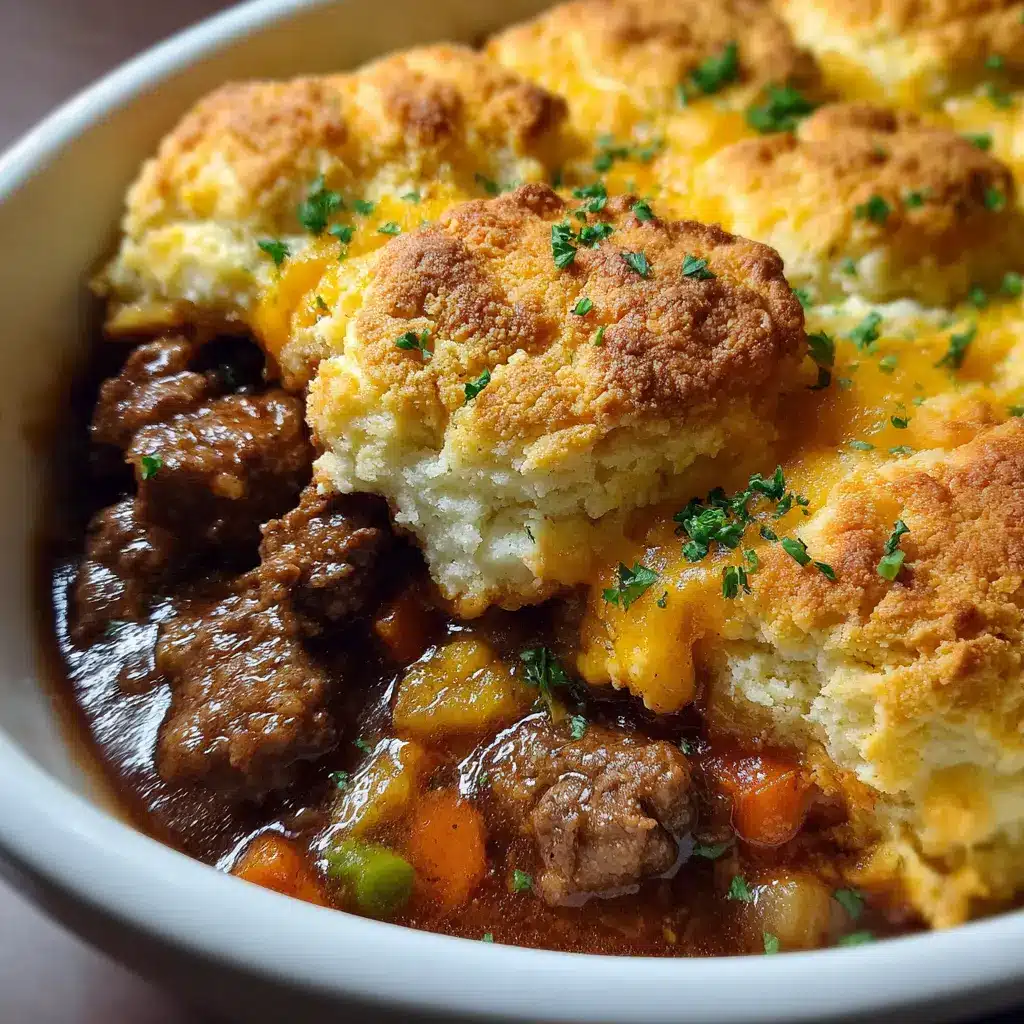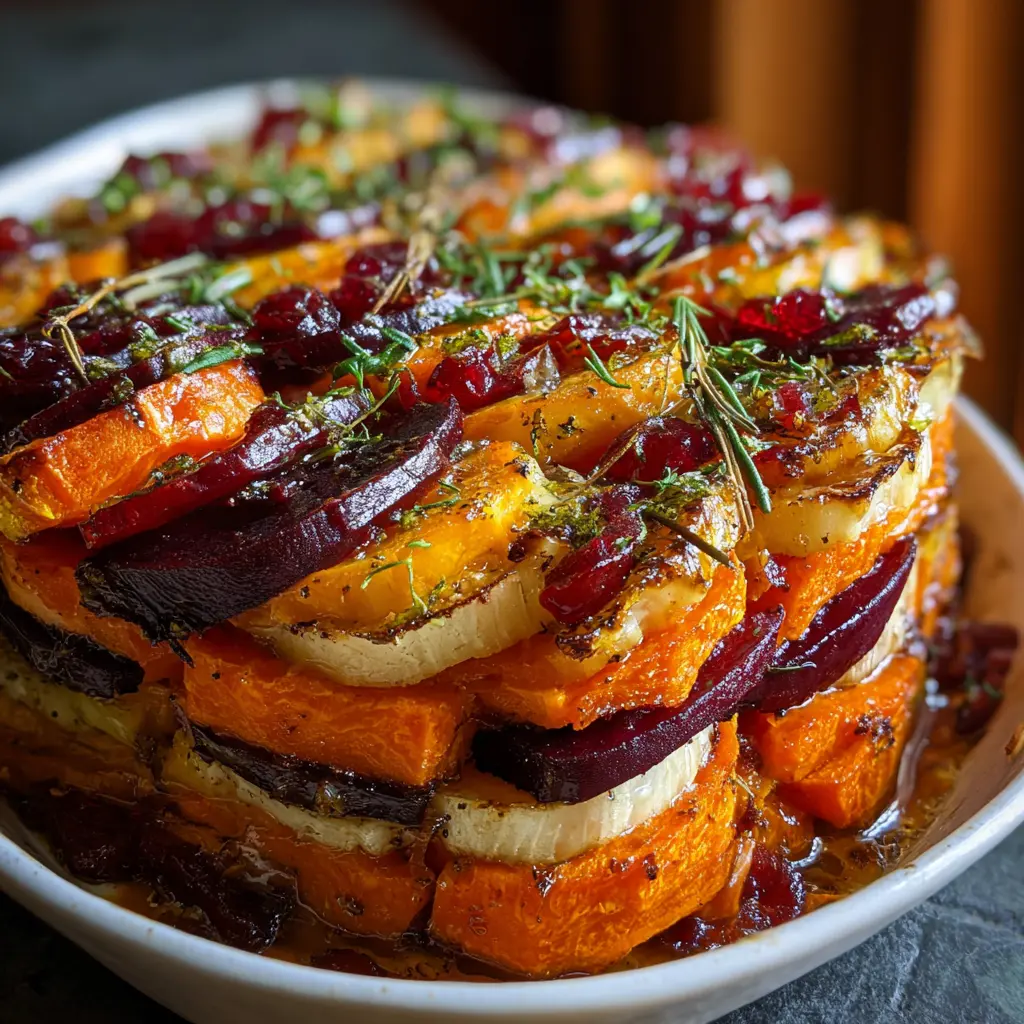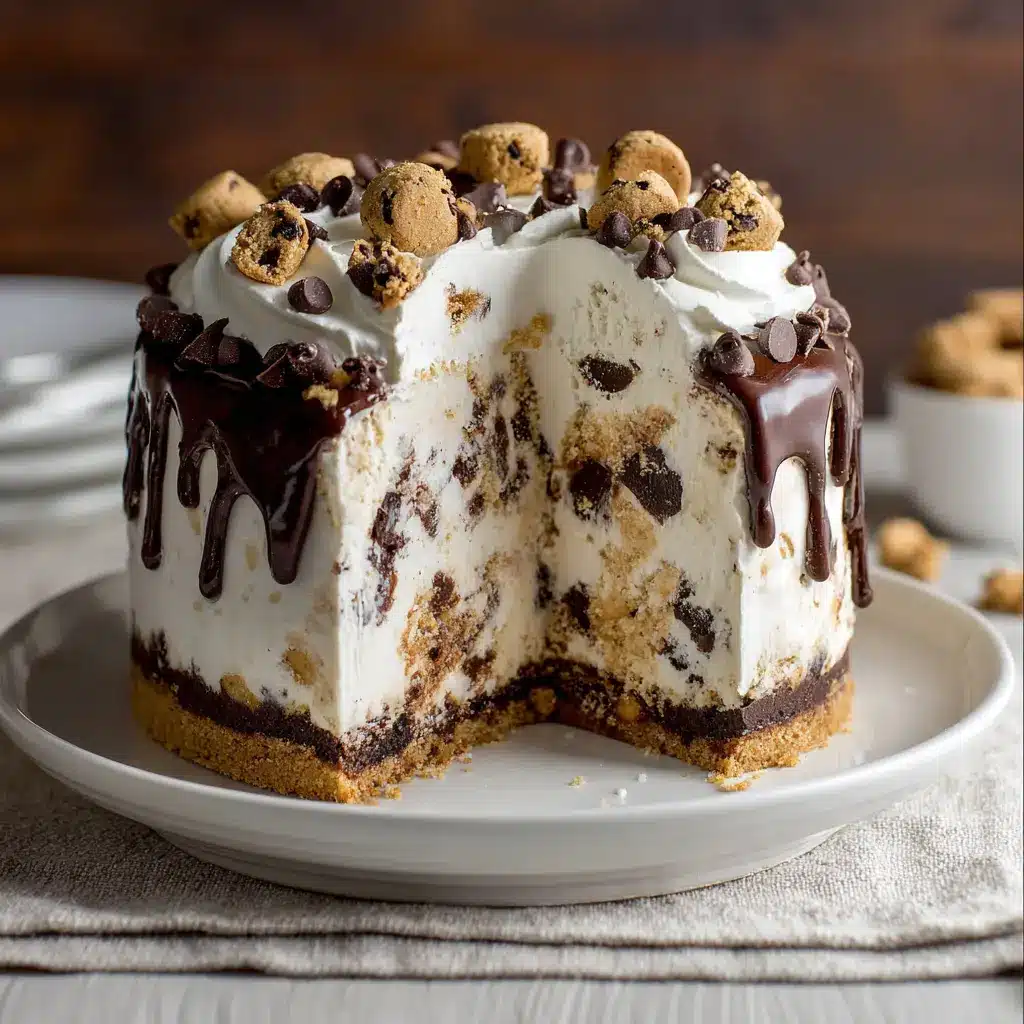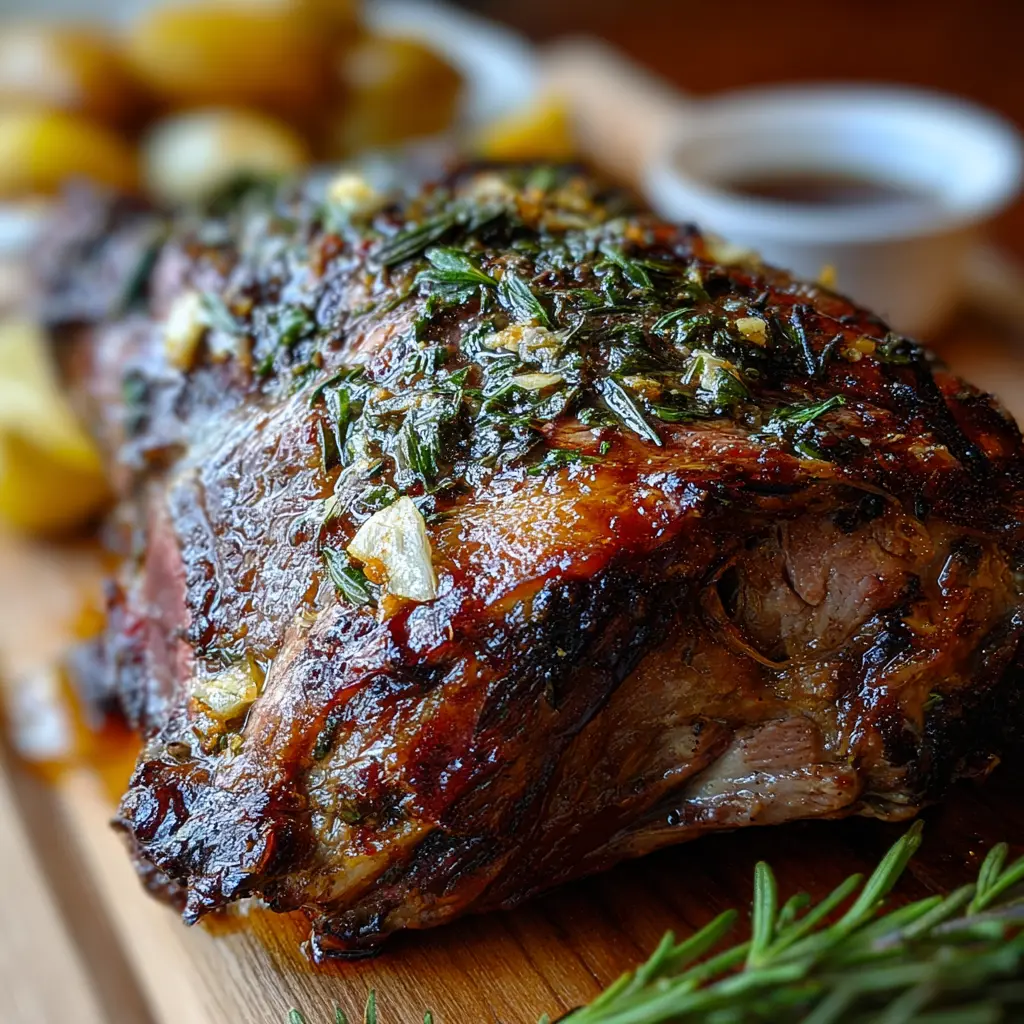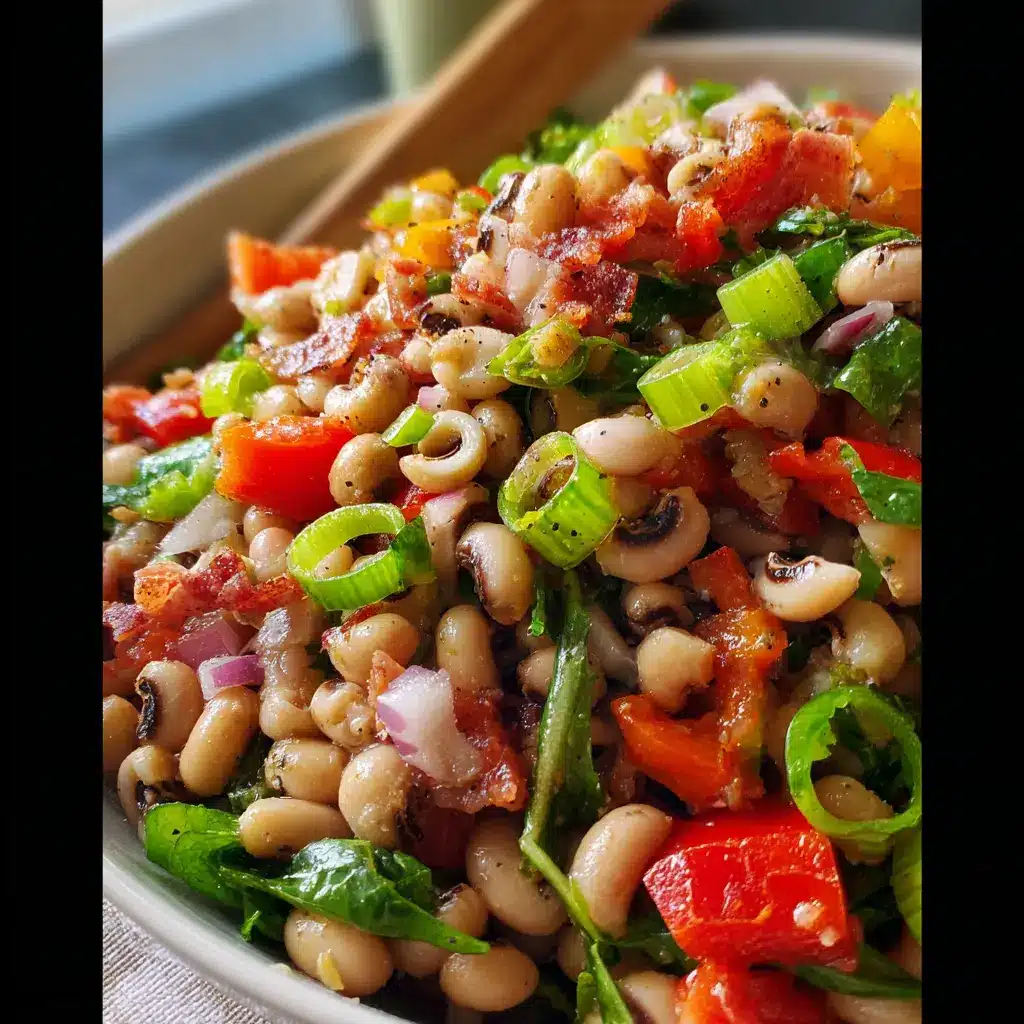Introduction to Oatmeal Cake
Oatmeal cake represents a wholesome and hearty dessert that combines the rich, comforting flavors of traditional baking with the healthful benefits of oats. The history of oatmeal cake can be traced back to the days when oats were predominantly considered a staple grain, mainly used for porridge or gruel. However, its popularity surged as people began to recognize the health benefits of incorporating oats into various forms of baking. This dessert has now become a favored choice for many, known for its moist texture and satisfying taste, making it a perfect blend of indulgence and nutrition.
The health benefits of oatmeal as an ingredient are manifold. Oats are a great source of soluble fiber, particularly beta-glucan, known for its ability to lower cholesterol levels and stabilize blood sugar. Additionally, oats are packed with antioxidants and essential nutrients, making an oatmeal cake not just delicious but also a healthier alternative to many traditional desserts.
Ingredients and Variations

The common ingredients in an oatmeal cake typically include:
- Whole grain oats
- Flour (all-purpose or whole wheat)
- Baking powder and baking soda
- Cinnamon and nutmeg for spice
- Eggs, butter, and sugar
- Milk or a milk alternative
These ingredients combine to create a cake that is not only flavorful but also boasts a tender crumb and moist texture.
For those with dietary restrictions or preferences, there are several variations of the classic oatmeal cake:
- Gluten-Free: Substitute the regular flour with a gluten-free blend. Be sure to check that the oats are certified gluten-free to avoid cross-contamination. Healthline provides an excellent guide on how to choose gluten-free alternatives while maintaining nutritional value.
- Vegan: Replace eggs with flax eggs or applesauce, and use plant-based butter and milk. This not only caters to vegan dietary requirements but also adds a different dimension to the cake’s flavor profile.
- Sugar-Free: Opt for natural sweeteners like stevia or monk fruit instead of regular sugar. This variation caters to those monitoring their sugar intake, ensuring that the cake remains a healthier option.
Incorporating these variations not only makes the oatmeal cake accessible to a wider audience but also enhances its appeal as a versatile and accommodating dessert option. By understanding and utilizing these ingredient alternatives, you can create an oatmeal cake that is not only delicious but also aligns with various dietary needs and preferences.
Preparing and Baking
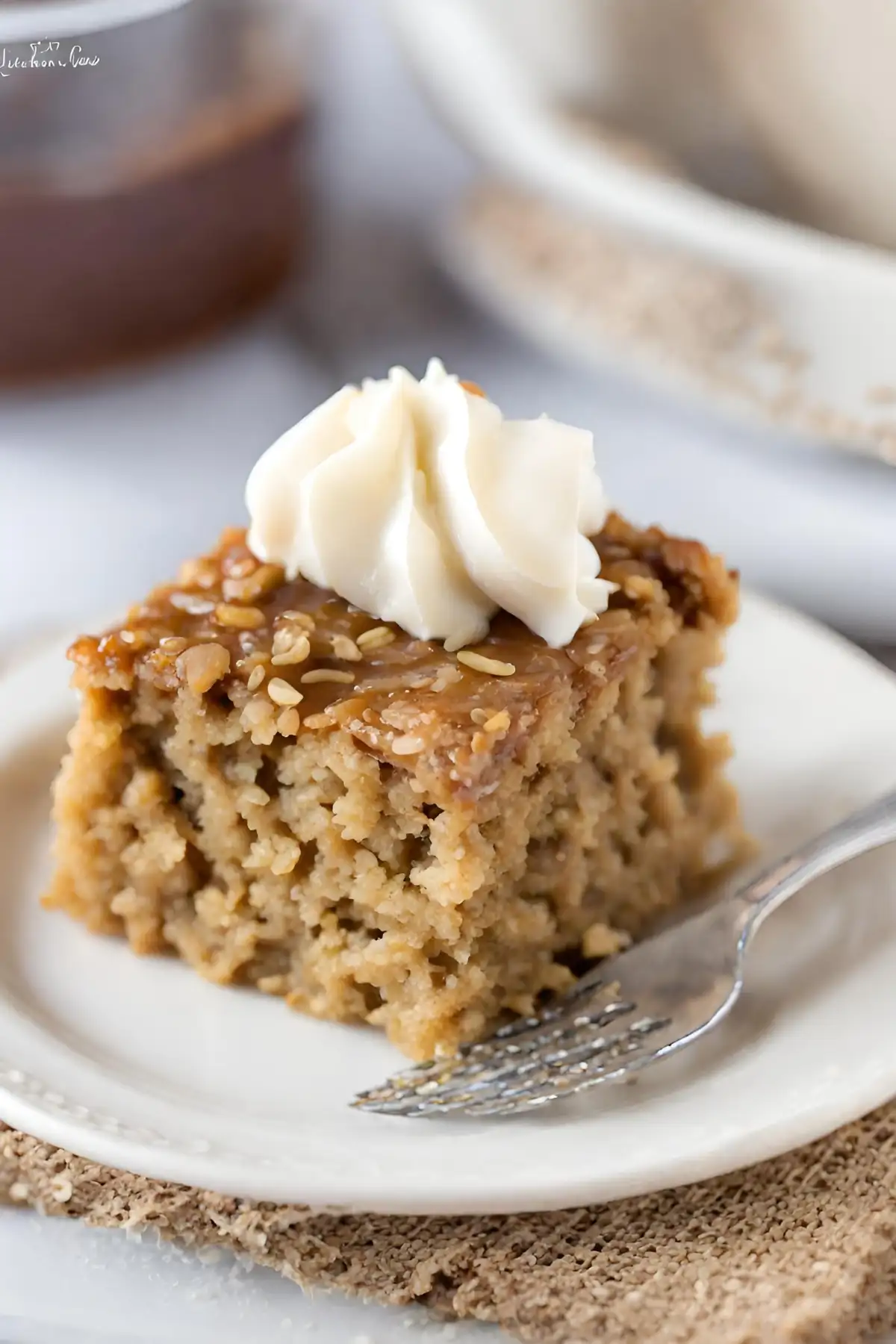
Preparation Method
Creating the perfect oatmeal cake begins with meticulous preparation. Follow this step-by-step guide to ensure your cake is not only delicious but also has a delightful texture:
- Preheat your oven to 350°F (175°C). Greasing and flouring an 8-inch square pan or lining it with parchment paper prevents sticking and facilitates easier removal of the cake after baking.
- In a large bowl, mix the dry ingredients: sifted flour, baking powder, baking soda, salt, cinnamon, and nutmeg. Ensure these are combined thoroughly for an even flavor distribution.
- In a separate bowl, cream together softened butter and sugar until light and fluffy. This process incorporates air into the mixture, contributing to the cake’s lightness.
- Beat in the eggs one at a time, ensuring each is well incorporated before adding the next. This helps to build structure in the batter.
- Stir in vanilla extract for flavor and then alternate adding the dry ingredients and milk (or milk alternative) to the creamed mixture, beginning and ending with the dry ingredients. This method prevents the batter from becoming too thick or too thin.
- Finally, fold in the oats gently, ensuring they are evenly distributed throughout the batter without overmixing, which can result in a dense cake.
Tips for best results:
- Use old-fashioned oats for a better texture as they hold their shape during baking.
- Ensure all ingredients are at room temperature to achieve a smoother, more homogenous batter.
- Do not overmix the batter once the flour is added to prevent the cake from becoming tough.
Baking and Cooling

Baking time and temperature are crucial elements in achieving the perfect oatmeal cake. Bake the cake at 350°F (175°C) for about 25-30 minutes or until a toothpick inserted into the center comes out clean. It’s important not to open the oven frequently as this can lead to uneven baking.
Cooling the cake properly is just as important as the baking process:
- Allow the cake to cool in the pan on a wire rack for about 10 minutes. This allows the cake to settle and firm up slightly, making it easier to remove from the pan.
- After 10 minutes, gently remove the cake from the pan and let it cool completely on the wire rack. This prevents the bottom from becoming soggy.
Serving suggestions:
- Serve the cake with a light dusting of powdered sugar or a drizzle of honey for added sweetness.
- Pair with fresh fruit or a dollop of whipped cream for a delightful contrast in textures.
- For a more indulgent treat, a scoop of ice cream on the side turns the oatmeal cake into a decadent dessert.
Remember, the key to a perfect oatmeal cake lies in the balance of flavors and textures, so take your time and enjoy the process. For more baking tips and techniques, Epicurious offers a wide range of resources to help enhance your baking skills.
Nutrition and Customization
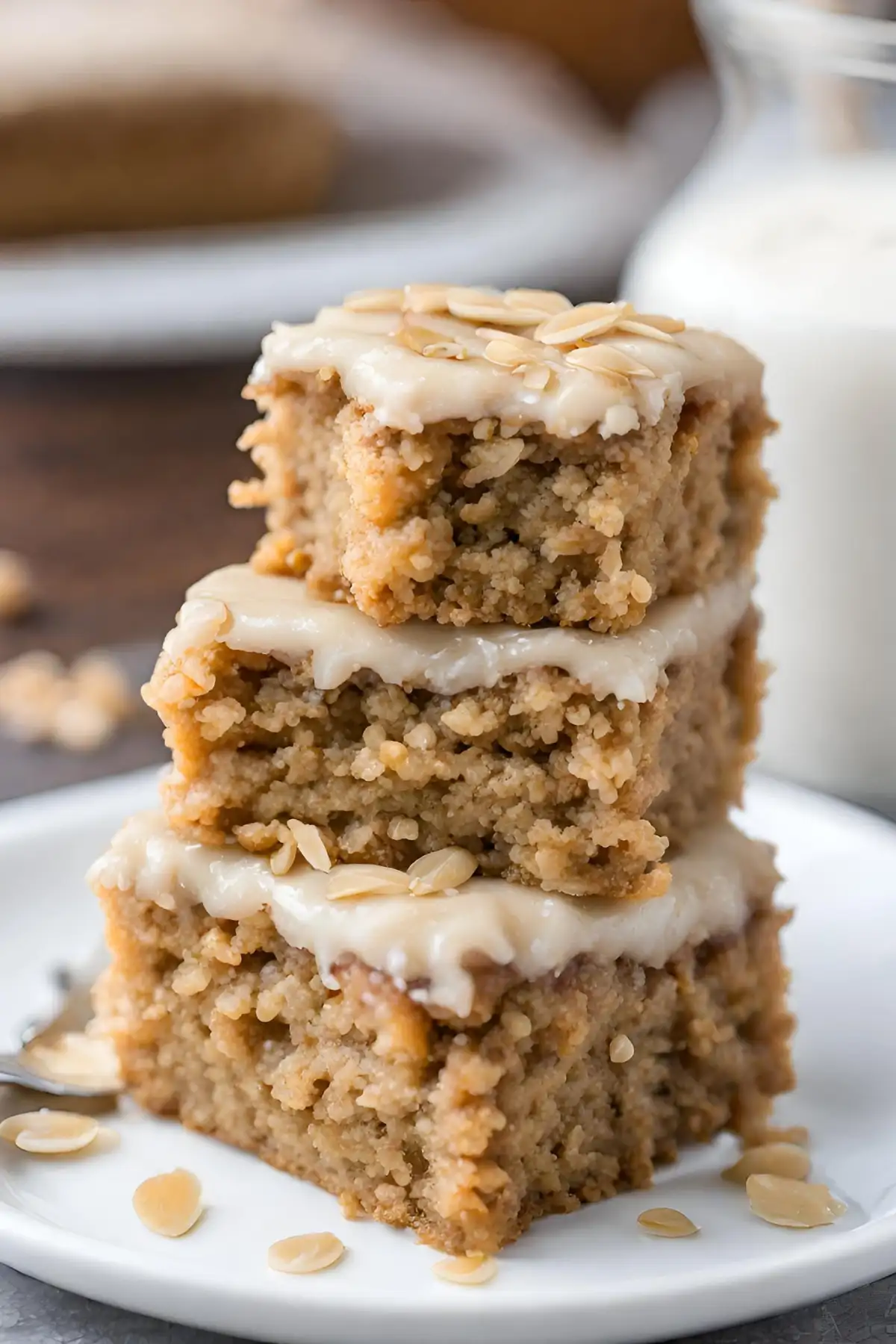
Nutritional Information
Understanding the nutritional information of your oatmeal cake can help you make informed decisions about your diet and health. A typical slice of oatmeal cake contains approximately:
- 200-250 calories
- 10 grams of fat
- 35 grams of carbohydrates
- 4 grams of fiber
- 5 grams of protein
The nutritional benefits of oatmeal cake stem primarily from its main ingredient: oats. Oats are a fantastic source of soluble fiber, particularly beta-glucan, known for reducing cholesterol and blood sugar levels. They also provide a decent amount of protein, essential vitamins, and minerals, contributing to a balanced diet. When paired with nutrient-rich add-ins like nuts or fruit, the health benefits of this cake can be significantly enhanced.
Customization and Add-ins
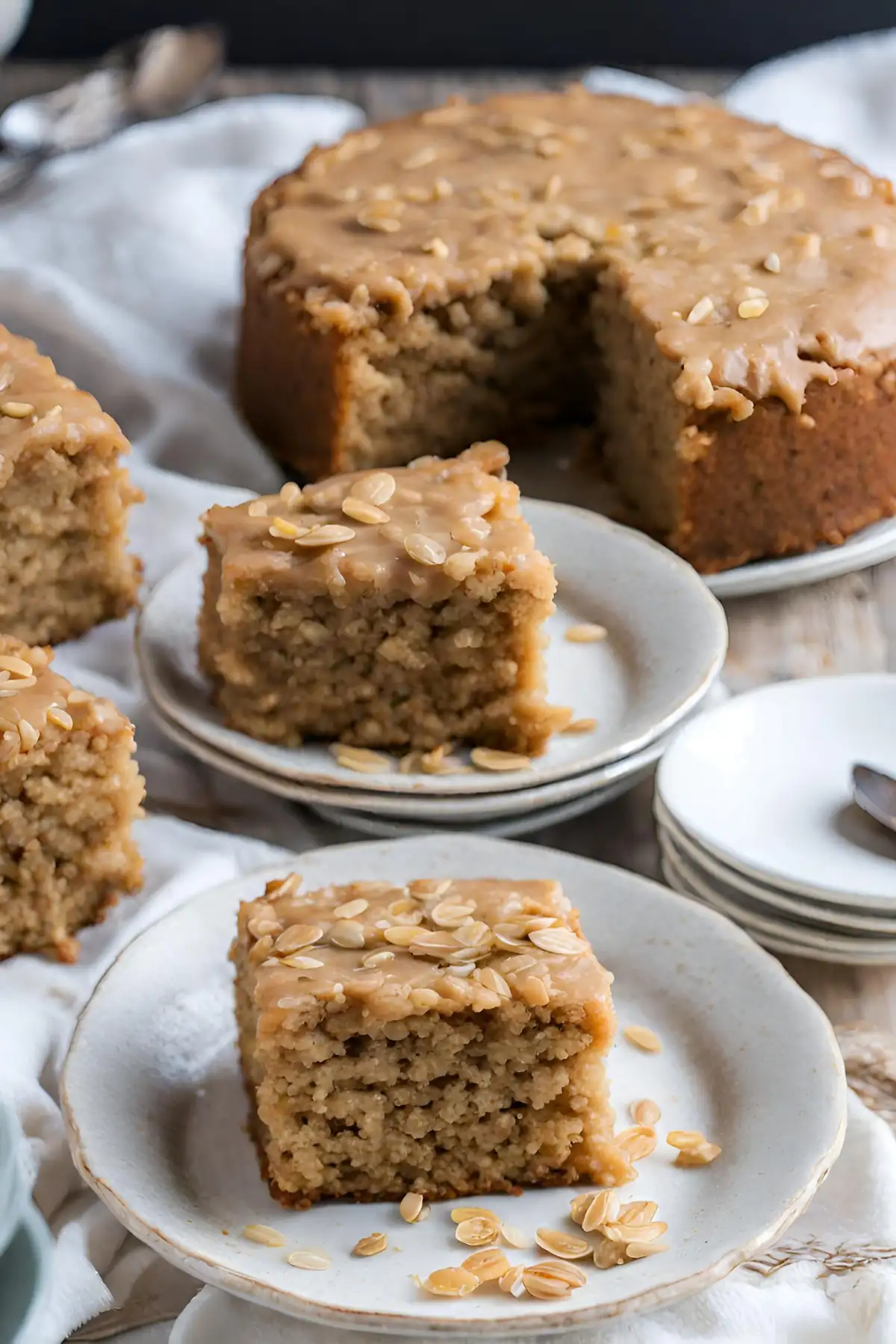
The versatility of oatmeal cake allows for numerous customizations and add-ins to suit various dietary needs and taste preferences:
- For added texture and nutrition, consider folding in nuts like walnuts or almonds, or fruits such as blueberries or diced apples.
- To enhance the flavor, incorporate spices like cinnamon or cardamom, or add-ins like coconut flakes or chocolate chips.
To make the oatmeal cake suitable for different diets:
- Keto-friendly: Substitute traditional flour with almond or coconut flour and use a sugar alternative like erythritol. Websites like Healthline offer comprehensive guides on keto baking substitutes.
- Low-fat: Replace butter with applesauce or Greek yogurt to reduce the fat content without sacrificing moisture.
By customizing your oatmeal cake, you can cater to a range of dietary preferences and restrictions, making it a versatile dessert option for various occasions and lifestyles. Always ensure to balance the add-ins and substitutes to maintain the desirable texture and flavor of the cake.
FAQs and Conclusion
FAQs
- Can oatmeal cake be made gluten-free?
- Yes, oatmeal cake can be made gluten-free by using certified gluten-free oats and substituting all-purpose flour with a gluten-free blend. Ensure all other ingredients are also gluten-free.
- How can I store oatmeal cake?
- Oatmeal cake should be stored in an airtight container at room temperature for up to three days or refrigerated for up to a week. For longer storage, it can be frozen.
- Is oatmeal cake healthy?
- While oatmeal cake is healthier than many traditional cakes due to the inclusion of oats, moderation is key due to sugar and fat content.
- Can I add fresh fruit to the batter?
- Absolutely! Fresh fruits like apples, pears, or berries can add flavor and moisture to your cake.
Conclusion
In conclusion, oatmeal cake is a versatile and delightful dessert that combines the comforting warmth of cake with the healthful benefits of oats. Whether you’re seeking a classic treat or a canvas for dietary customization, this cake offers something for everyone. I encourage you to try the recipe, experiment with variations, and share this nourishing treat with others.
History and Cultural Significance
The tradition of oatmeal cake dates back to when oats were a staple food in many cultures, revered for their nourishing properties. This cake holds a special place in the baking history, symbolizing resourcefulness and the ability to create delicious, hearty desserts from simple, wholesome ingredients. Its evolution reflects changing dietary habits and the continuous quest for balance between health and indulgence.
Serving and Pairing Ideas
- Pair with a dollop of whipped cream and fresh berries for a balance of creamy and tart flavors.
- Enjoy with a cup of coffee or tea as a comforting snack or dessert.
- Serve alongside a scoop of vanilla or cinnamon ice cream for an extra indulgent treat.
By exploring various serving and pairing options, you can enhance the oatmeal cake experience, making it suitable for diverse occasions and taste preferences.
Print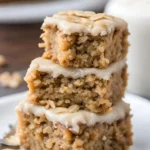
Oatmeal Cake
- Total Time: 45 minutes
- Yield: 12 servings
Description
This Oatmeal Cake is a moist, flavorful, and health-conscious dessert that perfectly balances the heartiness of oats with the sweetness of cake. Ideal for breakfast, snacks, or a light dessert, it’s a guilt-free treat for any day.
Ingredients
- 1 cup all-purpose flour (or gluten-free alternative)
- 1 cup rolled oats
- 1/2 cup unsalted butter, softened
- 3/4 cup brown sugar
- 2 large eggs
- 1 tsp vanilla extract
- 1 tsp baking powder
- 1/2 tsp baking soda
- 1/2 tsp salt
- 1 tsp cinnamon
- 1 cup milk (or plant-based alternative)
- Optional add-ins: nuts, fruits, chocolate chips
Instructions
- Preheat the oven to 350°F (175°C) and grease an 8-inch square baking pan.
- In a bowl, mix the dry ingredients: flour, oats, baking powder, baking soda, salt, and cinnamon.
- In another bowl, cream together butter and sugar. Add eggs and vanilla, mixing well.
- Alternately add dry ingredients and milk to the wet mixture, starting and ending with dry ingredients.
- Fold in any optional add-ins.
- Pour the batter into the prepared pan and bake for 25-30 minutes.
- Let the cake cool before serving.
Notes
- For a gluten-free version, ensure all ingredients, including oats, are gluten-free.
- Store in an airtight container to maintain freshness.
- Prep Time: 15 minutes
- Cook Time: 30 minutes
- Category: Dessert
- Method: Baking
- Cuisine: American
Nutrition
- Serving Size: per serving
- Calories: 250
- Sugar: 15g
- Fat: 10g
- Carbohydrates: 35g
- Fiber: 4g
- Protein: 5g



